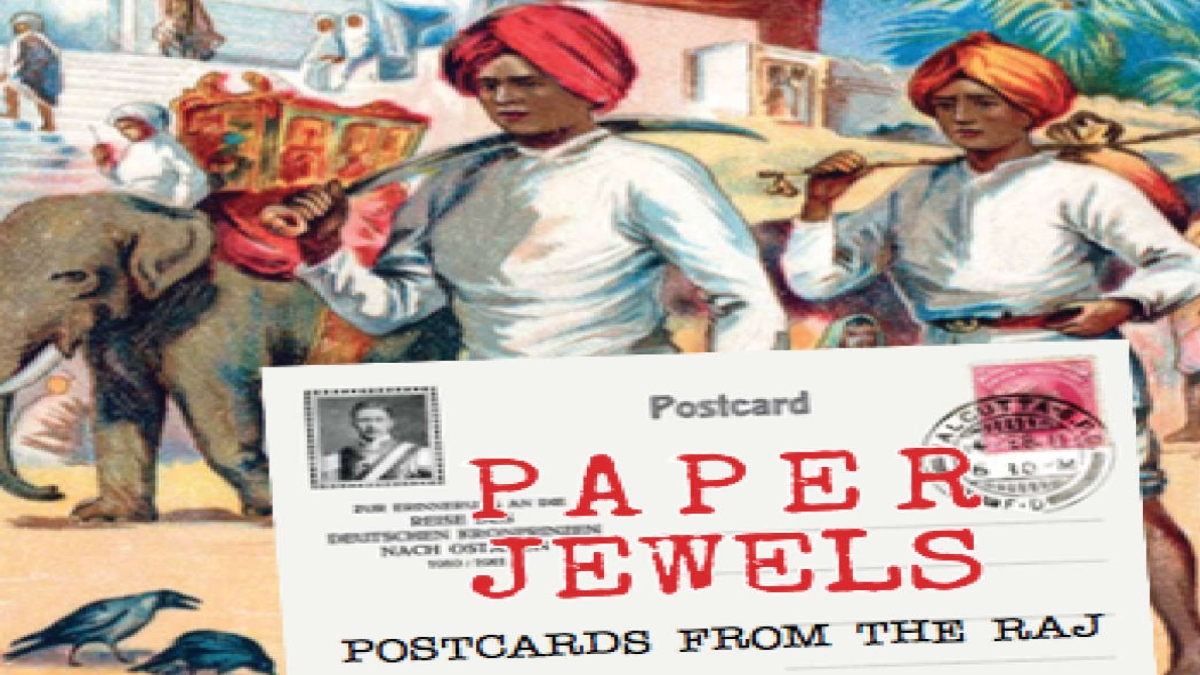
Images from the Raj era are like visual delights that are like veritable art forms. Remnants of the Kodak era when the world was just about discovering the pleasure of photography. When German and French presses located in Kolkata and Mumbai were reproducing works of masters. I stumbled upon this jewel of a book titled ‘Paper Jewels Postcards from the Raj’ by Omar Khan. It is a congregation of 518 vintage postcards that give you a visual tour of India, Pakistan, and Sri Lanka, and co-published by Mapin Publishing and the Alkazi Collection of Photography.
 ‘Paper Jewels Postcards from the Raj’ cover.
‘Paper Jewels Postcards from the Raj’ cover.

Temple dancers.
 Art inspired postcards.
Art inspired postcards. Gateway of India.
Gateway of India. French postcard.
French postcard.
Postcards were to people in 1900 what the Internet was to the world in 2000. These were the world’s first mass transfusion of color images. We went from thousands to billions of postcards in a handful of years. The finest painters and graphic artists from India, Austria, Britain, France, Italy, and the US were involved. It is the story of postcards during the Raj era and the first book on the subject that uncovers gems including early postcards of the great Indian painter M.V. Dhurandhar, Ravi Varma Press in Mumbai, exceptional work of an early Austrian lithographer in Kolkata, a British photographer in Peshawar, and Indian studios in Jaipur, Kashmir, Delhi, Lahore, Madras, Karachi.
Organised by place into a dozen chapters, the essays cover key themes crucial to postcard publishing: religion, dancers, teas, and soaps, famines, fakirs, humor, warfare, and the role of postcards in the Independence movement. It tells the stories of the first postcard publishers of the subcontinent between 1892 and 1947, most of whose images have not been seen since they were published a century ago.
‘Paper Jewels’ relies almost entirely on new primary research in archives and private collections in India, Pakistan, Europe, and the US, and explores the many artistic, business, fashion, political, and technical developments that contributed to the rise of a medium—the postcard—that is still very much with us today.
There were many reasons for the appearance of the picture postcard in the 1890s. These included the invention of photography—photographs were common by the 1870s, and the mass-produced Kodak camera came out in the 1880s and greatly democratised the form. There were more liberal international postal regulations and printing technologies like rapid press lithography were being exploited by small workshops and artisans in European and Indian cities. The growth of shipping and railway lines exemplified by cards like City Line To & From India contributed to a fertile tourist market. Postcards, as a messaging system, were literally built on an iron communications network. At the same time, the spark that proved the concept came from advertising. It was business and marketing that helped underwrite the initially rather high costs for printing postcards.
The selection of postcards in the book is eclectic and reflective of the many facets of the Raj era. The gallantry of the Indian forces is captured in a poster by Nestle’s Swiss Milk that celebrates the 20th Punjab Infantry, a successful British Indian Army regiment on the North-West Frontier. There are lilting images of the Southern peninsula. An endearing series by Singer Sewing Machine on the singer families. A very rich imagery of the Devadasis… yet another series of nawabs and kings posing like brown sahibs.
Especially interesting are those sent from the Taj Mahal Palace hotel in Bombay, which opened at the height of the postcard craze in the city in 1903. A postcard produced by the hotel is one thing: clean, purchased on the rack at the hotel shop, A postcard with instructions sent by J.C.G. Goodrich to the Editor of a Seattle, Washington newspaper on Christmas eve is quite another. Other times the writing overwhelms a beautiful card, as in the case of Bombay.